
World Rabies Day is a global awareness campaign organized by the Global Alliance for Rabies Control, a non-profit organization headquartered in the USA. The day is a United Nations Observance Day endorsed by various international human health and veterinary health organizations, including the World Health Organization, World Organization for Animal Health, US Centers for Disease Control and Prevention, and the Pan American Health Organization.
World Rabies Day is held every year on September 28th on the death anniversary of Louis Pasteur. He managed to develop the first effective vaccine against rabies. World Rabies Day focuses on raising awareness about the impact of rabies on animals and humans, offering necessary information, and advice on how the disease and its related risk can be prevented. The day also focuses on increasing support advocacy for enhancing efforts in controlling rabies.
1. History
Worlds first rabies day campaign started on September 8th, 2007, as a partnership between CDC and Alliance for Rabies Control, co-sponsored by the WHO, World Organization for Animal Health, and Pan American Health Organization. The association was brought in to focus attention on a neglected disease.
In just three years of honoring World Rabies Day, in 2009, the Global Alliance for Rabies Control calculated that approximately 100 countries were now observing the day and were made aware of the disease and its prevention. Moreover, 100 million people globally were educated about rabies, and more than 3 million dogs were vaccinated during those three years as a part of the campaign.
World Rabies Day - Logo
The official logo for World Rabies Day features a globe in the colors green and blue. The green in the globe is shaped in the form of a bat on the left, with a human in the center and a dog on the right. The words World Rabies Day and the events month, date, and year are typed out in black on the outer part of the globe. These elements are all kept within a black ring, which completes the logo of this day of observance.
Global Problem

Rabies is currently responsible for agonizing the lives of over 59,000 humans every year, including their unfortunate demise. Of this figure, every year, rabies is responsible for 40% of children developing symptoms and dying. Most of these people are from poor rural communities of Africa and Asia. They are far away from the reach of correct medical and veterinary services. In addition to this, millions of dogs and other animals suffer from the symptoms every year and die because of the disease and other in discriminatory factors against them, often prompted due to the disease.
Deaths from rabies are unnecessary, and rabies is a preventable disease. This means we do have safe and effective vaccines globally to protect both humans and animals from rabies.
2. Signs and Symptoms of rabies
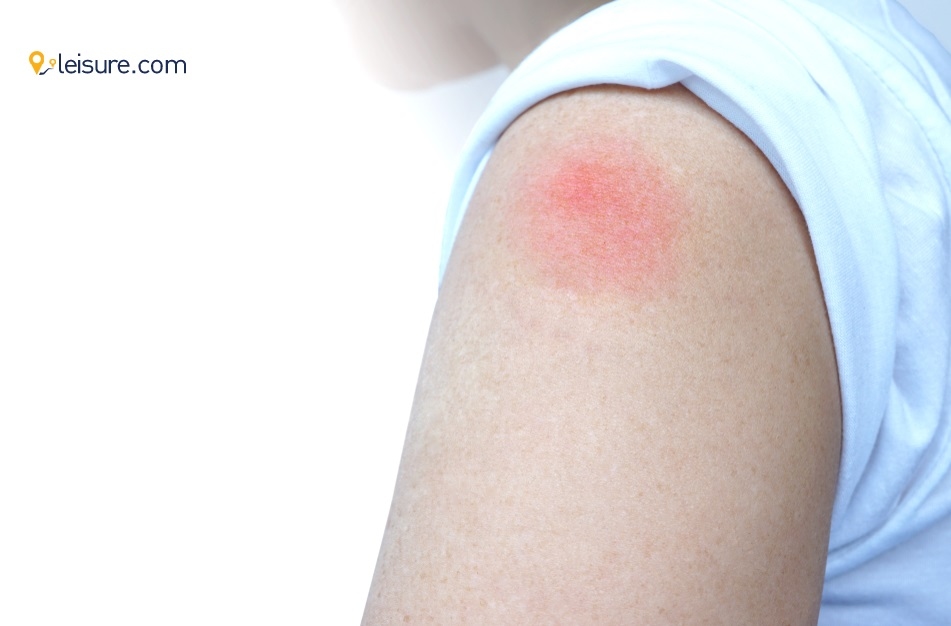
Following exposure to the rabies virus, the onset of symptoms can take anywhere from a week to over a year to occur. The average time taken here can be between 1-12 weeks among people. The total time taken depends on how long the virus travels from the wound site to the persons brain when the symptoms begin.
This is also based on various factors, like the place of the infection and its distance from the brain, the amount of virus that has entered the body, the size of the infected animal, etc.
So, if a large person is bitten on the foot, the onset of symptoms can be more prolonged when compared to the spread in a child bitten on their face.
Rabies Symptoms
1. In people
The initial symptoms of rabies are similar to those of flu. It can start with a headache, fever, and a general feeling of not feeling well. As the disease progresses, the person can also begin experiencing delirium, abnormal behavior, and hallucinations. The onset of the infamous hydrophobia and foam formation around the mouth can also start in a few days of the flu-like symptoms. It is necessary to know that rabies symptoms can greatly vary, which means not every person will have the same symptoms.
2. In animals
Rabies symptoms and signs in animals are very similar to those in humans. Symptoms show up as a change in their behavior. They will either turn aggressive, or they become highly tame and calm. If the animal is already quiet, they tend to become aggressive. Animals also show signs of paralysis or partial paralysis in some cases, with abnormal vocalization; for example, a dog can start barking strangely than it used to. The animals also start attacking inanimate objects or start biting rocks, trees, and other things. They develop hydrophobia and start developing foam around their mouth.
However, rabies in animals is difficult to diagnose without testing it in the laboratory as signs can vary in different cases and animals. One thing is for sure, once symptoms of rabies begin, it will eventually result in their death.
3. Eliminating Rabies
The good news here is that rabies is 100% preventable. There are tools and scientific methods that can help eliminate rabies without going through extensive suffering, financial burdens, or loss of life. These methods and tools include effective vaccines for dogs to stop the spread at the source. There are also effective treatments for humans who are exposed to infected dogs/animals.
What can you do to eliminate rabies?
People with pets as dogs or cats can ensure that their pets are wholly vaccinated against rabies. What also needs to be done is to ensure their vaccinations are up to date. This is the best way to prevent rabies in and around your community. Gradually, this helps eliminate the disease.
However, even when people do not own a cat or a dog, they can still help prevent rabies.
Anyone can spread the correct information to raise awareness about the disease among their family and friend circle. They can take to social media to spread the word and educate others in their community by sharing resources on September 28th on World Rabies Day.
1. Prevention in humans
Rabies is 99% fatal in humans once the symptoms begin to appear. It is still wholly preventable.
The best way to prevent rabies from spreading to humans is to avoid being bitten by strange animals or animals whose vaccine status is unknown. It is for this very reason that our resources and material are based on animal bite prevention. If animals do not bite people, this can significantly reduce the number of rabies-related deaths in humans globally.
Rabies post-exposure prophylaxis
If you happen to get bitten, licked, or scratched by an unknown animal, you should seek medical treatment immediately and receive post-exposure prophylaxis. This is irrespective of the severity of the wound since even the most minor scratch mark can break your skin and result in an infection spreading in your body. Leave it up to your health care provider to determine if you are at risk of rabies or not.
Rabies post-exposure prophylaxis consists of three significant steps to ensure that you are safe and prevent any unnecessary damage to your body.
Step 1
Immediately and rigorously wash the bitten/licked/scratched area with soap and water for up to 15 minutes. This helps flush the virus particles off your wound, which reduces the likelihood of you developing an infection.
Step 2
Step 1 alone is not enough. You should also seek immediate medical attention at your nearest health facility. Ensure that you mention your exposure to unknown/unvaccinated animals at the center and you are concerned about getting infected with rabies. Your health care provider will do a risk assessment based on their knowledge and expertise to determine if you require a vaccine or any particular rabies antibodies to help fight the infection. All of this will be based on the severity of your world and the history of your exposure to such animals. You must seek medical attention as soon as possible to ensure you are saving yourself from all the horrifying suffering and save your life.
Step 3
If your health care provider deems it necessary to offer you a course of vaccine or rabies antibodies, you should complete the entire course of such vaccine. This means you will be required to return to the health care center to get additional vaccine doses. This is essential since just one vaccine is not enough to ensure your safety against rabies.
World Rabies Day 2025 - Rabies: Facts, not fear.
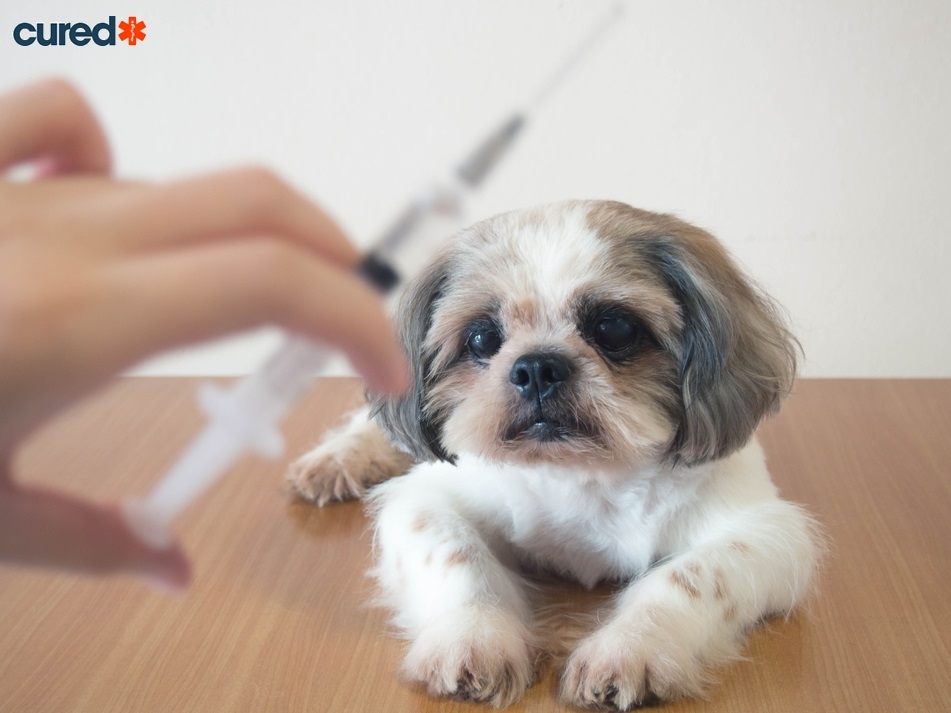
The theme for World Rabies Day 2025 is Rabies: Facts, not Fear. The theme was selected in light of the ongoing global pandemic - Covid-19. The pandemic has raised plenty of doubts and misconceptions about various diseases, their spread, and vaccinations in general. Due to this, people are hesitant in the context of the Covid-19 vaccine in multiple countries. People are afraid to get vaccinated.
As far as rabies is concerned, fears, misconceptions, and misinformation have been present for many years abundantly. This fear dates back to hundreds of years. For the same reason, the theme for World Rabies Day 2025 focuses on sharing facts about rabies and not spreading fear surrounding it. This encourages people to not rely on myths and misinformation; instead, they rely on facts and education about the disease.
Facts are essential for raising awareness for the disease, preventing rabies, and having animals vaccinated. Facts also help in educating people about the dangers of rabies and its prevention. Without facts, we will never have the correct data to make the right decisions and inform people of the severe nature of rabies. We will never be able to advocate its elimination and eradication, and the burden of rabies will remain unknown. This burden might as well result in tens of thousands of people and animals dying every year.
Therefore, the theme for this year emphasizes using facts correctly to raise awareness and educate people about rabies, which is fatal yet completely preventable.
The word Fear in the theme has three meanings. First, it relates to general fear caused by rabies; fear people experience when encountering rabid animals, and the fear that people live within communities plagued by such rabid animals.
The word also relates to the fear people experience when they are infected with rabies.
The last meaning of fear here relates to the fear caused by fake news and myths spread about rabies, making people afraid of vaccinations. This fear also discourages people from getting their animals vaccinated and sterilized, making others believe in the inefficacy of treatments available for the disease.
How can you be involved?
The theme for this year is designed in such a manner to encourage more and more people to participate in various ways, making World Rabies Day 2025 an annual event everyone can be a part of.
Here are a few ways you can consider becoming a part of the World Rabies Day 2025:
Learn facts, not fear
People can start by being educated about the disease. Use suitable sources to educate yourself and those around you about rabies, its consequences, preventive measures, etc. You can learn the correct facts and share the knowledge with others. You can also try to become a certified rabies educator by getting a Rabies Educator Certificate. People can also undertake a profession-specific training course.
Use facts, not fear.
People can contribute to gathering evidence to eliminate rabies based on scientific evidence, knowledge, and facts. You can use the information you learn from certified training courses and suitable online sources to advocate a better control for rabies in and around your community. The measures here can range from calling for a mass dog vaccination to advocating humane management of the dog population instead of ineffective dog culling.
Spread facts, not fear
People can also get involved by spreading awareness, accurate facts, and information about rabies and dispelling misconceptions, myths, and doubts. You can do so by spreading the word around through social media, brochures, and meetings in and around your community.
Final Words
Rabies remains a significant health concern for many countries around the world. Over 99% of human deaths due to rabid animals happen in developing countries, with 95% of those deaths occurring in countries like Asia and Africa. People and animals across the world are at severe risk of contracting rabies.
Lets pledge to educate and spread the correct information this World Rabies Day 2025 among people at risk. Work together with organizations and public health departments to curb this neglected disease.
Recent Articles
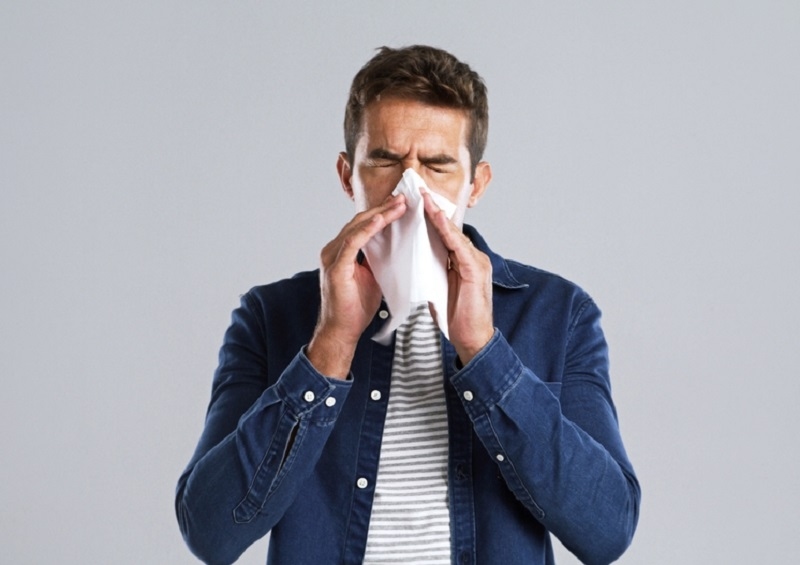
Allergic Rhinitis (Hay Fever): Symptoms, Causes, and Relief
Allergic rhinitis is one of those conditions that people often brush aside until it starts affecting their daily routine. Some feel it only when the weather shifts while others struggle with it through most seasons. What starts as mild irritation slowly becomes something that affects breathing, sleep, mood and overall comfort. Since this condition is extremely common and often poorly understood, I wanted to break it down in a simple way. This guide covers what is allergic rhinitis (hay fever) is, why hay fever shows up the way it does and how natural remedies for hay fever can make life a lot easier.What Is Allergic Rhinitis (Hay Fever)Allergic rhinitis is your body reacting to allergens in the environment. These allergens are usually harmless, yet your immune system treats them as a threat. When that happens your body releases chemicals that create irritation in the nose, throat and eyes. This is what we call hay fever. People experience it in different ways but the core issue remains the same. The immune system becomes sensitive to things like pollen, dust mites, mold spores and pet dander.The intensity of allergic rhinitis (hay fever) depends on how sensitive a person is, how often they are exposed to the allergen and the environment they live in. Some people experience hay fever symptoms only during the spring or monsoon while others experience allergic rhinitis throughout the year due to indoor triggers.Also check: What Are The Causes Of Common Colds: Understanding the ColdCommon Hay Fever Symptoms You Should Not IgnoreHay fever symptoms can be annoying at first and then slowly start affecting your productivity and rest. These symptoms vary from person to person but the usual ones include:Constant sneezingRunny or blocked noseItchy or watery eyesItchy throat or earsPressure or heaviness in the sinusesPost-nasal dripFatigue due to poor sleepMany people confuse hay fever symptoms with a regular cold. The biggest difference is that hay fever does not come with fever or body aches. Symptoms also tend to last much longer. If your nose feels irritated every time you enter a dusty room or step outside during pollen season then allergic rhinitis is most likely the cause.Over time untreated allergic rhinitis can trigger headaches, poor concentration and disturbed sleep. This is why managing hay fever early makes a big difference.What Causes Hay Fever (Allergic Rhinitis) And Why It Keeps Coming BackHay fever has a pattern. It often shows up during certain seasons or specific situations. The most common reasons for what causes hay fever (allergic rhinitis) include:Pollen from grass, trees or weedsDust mites present in mattresses or carpetsMold growing in damp areasPet danderSudden temperature changesPollution or smokeThe reason hay fever keeps coming back is simple. As soon as your body detects the allergen again the immune system reacts. The cycle continues unless exposure is reduced or your body is supported with proper treatment and natural remedies for hay fever.Lifestyle also plays a role. Humidity, pollution, lack of ventilation and unclean soft furnishings all increase the chances of allergic rhinitis.Natural Remedies For Hay Fever That Actually HelpWhen people search for natural remedies for hay fever they usually want relief without depending on medication all the time. While medicines are helpful, especially during severe allergic rhinitis, simple home based steps can make a noticeable difference. These natural remedies for hay fever work well when followed consistently.Steam inhalationWarm steam helps loosen mucus, clear nasal passages and reduce irritation. It is one of the easiest natural remedies for hay fever and works especially well before sleeping.Saline nasal rinseA simple saltwater rinse removes allergens trapped inside the nose. It also reduces inflammation and gives quick relief. Using it once or twice a day helps manage hay fever symptoms effectively.HoneyLocal honey may help some individuals by exposing the body to small amounts of pollen. This is not a guaranteed solution but many people notice reduced allergic rhinitis symptoms after regular use.Warm waterStaying hydrated thins mucus and reduces congestion. Warm water also soothes irritation and supports general sinus health.Turmeric and black pepperTurmeric contains curcumin which supports the body's natural anti inflammatory response. When mixed with black pepper the absorption improves. This simple combination is a common natural remedy for hay fever and helps reduce allergic rhinitis flare ups.GingerGinger can ease nasal irritation and support digestion which also influences overall immunity. Adding it to tea or warm water helps calm hay fever symptoms.Keeping rooms well ventilatedFresh air helps lower indoor allergen levels. Since allergic rhinitis often gets triggered indoors, proper airflow makes daily breathing much easier.aThese simple steps may look small but when combined they create long lasting relief.When To See A ProfessionalWhen hay fever signs persist for a long time or begin to interfere with your sleeping or living patterns, then it is highly recommended that you consult a doctor. Long-lasting allergic rhinitis may give rise to problems such as sinusitis infections or making the asthma symptoms worse. An allergist is capable of performing allergy testing and providing a specific treatment plan. This way, you will be able to tell for sure what you are allergic to and how to deal with it.One does not have to bear allergic rhinitis indefinitely. Out of the combination of natural remedies for hay fever, less exposure, and professional help, the vast majority of people see quite a lot of improvement.More to Discover: Unveiling the Mystery Behind Dry Skin: Causes & TreatmentFinal ThoughtsAllergic rhinitis may be common but it does not have to control your routine. Understanding your triggers and paying attention to consistent care can change how your body reacts. Natural remedies for hay fever work best when followed patiently. Whether your hay fever symptoms show up seasonally or throughout the year, a mix of awareness, clean surroundings and supportive habits can make daily life a lot smoother.Frequently Asked Questions On Allergic Rhinitis (Hay Fever)Got questions? We have covered a few commonly asked questionsIs allergic rhinitis the same as hay fever?Yes, both terms describe the same condition. Allergic rhinitis is the medical name, while hay fever is the more commonly used name. What is the best treatment for allergic rhinitis?The best treatment depends on how strong the symptoms are. Many people get good relief with antihistamines or nasal steroid sprays because they reduce sneezing, itching and congestion. Others use a mix of lifestyle changes, natural remedies and medication during allergy seasons. How do you treat allergic rhinitis permanently?There is no permanent cure, but symptoms can be controlled long term. Allergy shots and sublingual tablets are often recommended for people with strong or frequent symptoms. These treatments slowly train the body to react less to allergens. They do not provide instant results but can offer lasting improvements over time.What is the home remedy for allergic rhinitis?Several home remedies can help. Saline rinses remove allergens from the nose, steam helps loosen congestion and certain foods support the body when irritation increases. Keeping indoor spaces clean, washing bedding often, using air filters and reducing exposure to dust, mold and pollen also help keep symptoms in check.
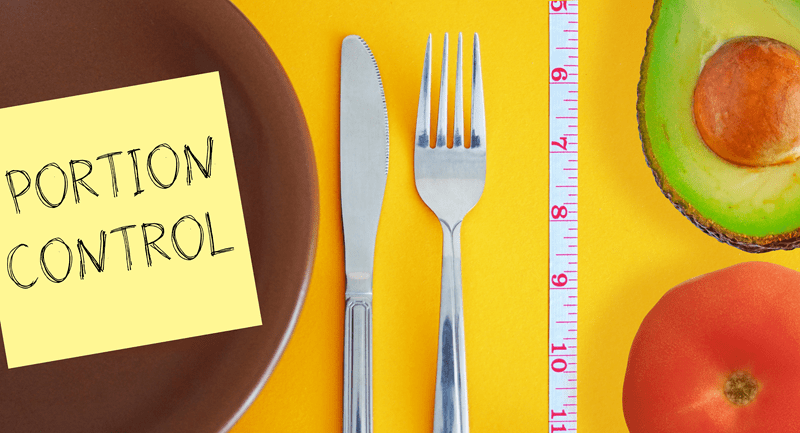
How Portion Control Diet Helps You in Eating Balanced Meals?
A portion control diet is a simple way to manage how much food a person eats without making the process feel heavy. It focuses on serving enough food for the body instead of filling the plate without thinking. In this blog, the meaning of portion control is explained, along with steps that help manage meals, tips that guide daily eating, and simple ways that show how to control the portion size of food.What Is Portion Control and Why It MattersPortion control means being aware of how much food is placed on the plate. Many people eat more when the plate is big or when the food comes in large packets. Over time, these habits make it difficult to notice how much is actually needed. Portion control helps bring attention back to the amount served, which allows meals to feel steady and balanced.It is not a process of restricting someone or making your eating experience stressful. It is focused on building better eating habits with slow and steady changes. The moment you start following portion control meals, you will start noticing the time you are really hungry and need food. This awareness will make your eating process a lot better.Simple habits like using a smaller plate, slowing down during meals, and avoiding large containers help shape the mind's sense of portion sizes. Small steps like these acts as reminders that the body does not need more than what keeps it comfortable. These habits become natural when practiced daily.Portion control also encourages people to include better food combinations. A plate with vegetables, protein, and whole grains feels more balanced. When the plate is arranged this way, the meal becomes easier to manage and prevents overeating. Even though the changes look small, they build a routine that supports better health in the long run.Top Pick: Superfood Recipes for Energy, Immunity, and BalancePortion Control Tips for Daily EatingThese portion control tips help create a simple rhythm during meals. They can be followed by anyone and fit easily into a busy day because the changes are not difficult. They only take a bit of attention.Use Smaller Plates for Mindful EatingA smaller plate helps a person serve less food without feeling like something is missing. When the plate looks full, the mind accepts the portion as enough. Many people find that they eat slower and feel more satisfied when smaller plates or bowls are used. It also helps avoid the habit of piling food onto a large plate.Start Meals With a Glass of WaterA glass of water before eating helps the body pause for a moment. Sometimes people think they are hungry when they are actually thirsty. Water helps settle that confusion. It also slows down the start of the meal and allows the body to send clearer signals. This is helpful when someone is trying not to overeat.Avoid Eating From the ContainerEating directly from the container makes it hard to know how much has been eaten. Whether it is snacks, cereal, nuts, or anything else, pouring the food onto a plate or bowl creates a clear boundary. This simple step helps a person see the portion and avoid eating more than planned. It is a small habit that makes a big difference.Tips to Control the Portion Size of Food at HomeLearning how to control the portion size of food becomes easier when simple guides are followed. These steps help build a better sense of balance and make the plate easier to manage.Use Your Plate as a GuideA plate can act as a natural guide for a balanced meal. Half of the plate can include vegetables or fruits. The other half can be divided into protein and whole grains. This helps create portion control meals that are easy to follow without needing tools or strict measuring. This pattern also makes the plate look complete while staying balanced.Use Hand MeasurementsHand measurements are helpful when measuring tools are not around. The palm can guide the protein portion. A cupped hand can guide vegetables or fruits. A fist can guide grains. A thumb can guide fats. Because the hand size matches the person's body size, this method feels practical and can be used anywhere, even outside the home.Eat Slowly and Notice FullnessEating quickly prevents the body from signaling fullness in time. Slowing down helps the body send the right signals. Taking smaller bites, pausing between mouthfuls, and paying attention while eating are simple ways to feel full with an appropriate amount of food. These steps improve portion control without needing any extra tools.Simple Ways to Practice Portion Control Every DayDaily habits shape long-term success. When simple routines are followed, portion control becomes easier and more natural.Read Food Labels for Serving SizesFood labels show serving sizes that help a person understand the recommended amount. Many people do not notice serving sizes, which makes it easy to eat more than intended. Reading labels does not take long, and it helps create awareness that supports portion control.Measure Food When NeededMeasuring food helps understand real serving amounts. After some time, the person starts recognizing the right portion without special tools. This step teaches the difference between actual portions and what might feel like a portion, which is often larger than needed. Measuring builds a steady understanding that stays with the person.Keep a Simple Food DiaryA food diary helps track what is eaten during the day. Writing down meals brings attention to habits that may lead to larger portions. When the diary shows patterns, it becomes easier to make adjustments. This awareness helps the person guide their own eating without strict rules.Must Read: Best Mood Boosting Foods and Adaptogen Foods for YouHow Portion Control Helps Build Healthier Meals?Portion control meals help build balance. When the plate includes vegetables, protein, and whole grains, the body receives a steady mix of nutrients. This helps with energy and keeps hunger steady during the day.A portion control diet also supports mindful eating. When the person starts noticing how different foods affect hunger and fullness, they naturally begin choosing portions that match their needs. This helps avoid eating based only on habit or routine.Portion control also teaches the difference between hunger and availability. Many people eat when food is present, not when they are hungry. When portion control becomes part of their routine, they begin recognizing the difference and become more aware of their eating habits.ConclusionA portion control diet helps maintain balanced eating through simple habits. When people slow down, use smaller plates, and stay aware of portions, meals feel steady. These steps support better choices and help shape a routine that becomes easier to follow with time.

Superfood Recipes for Energy, Immunity, and Balance
Food should make you feel good. It should keep your body strong, your mind clear, and your mood steady. That's what superfood recipes are all about. When you eat real, nutrient-packed food, you give your body what it actually needs to stay sharp and balanced.You don't need expensive powders or exotic ingredients to eat well. Most superfoods are simple things you can find at any grocery store. The secret is learning how to put them together in a way that fuels your body and keeps your energy up all day.Why Superfoods Matter More Than You ThinkSuperfoods aren't a trend. They're real, whole foods loaded with vitamins, minerals, and antioxidants. They support your immune system, help fight fatigue, and protect your body from everyday stress. That's the base of an antioxidant-rich diet.If you've ever wondered why some people seem to have natural energy while others crash halfway through the day, it often comes down to what's on their plate. When you eat immune-boosting foods like berries, leafy greens, and fish, you're feeding your cells what they need to stay strong. Add some protein, healthy fats, and fiber, and you've built one of the most effective energy meals you can imagine.More to Discover: 10 Easy and Healthy Nutrition Recipes for a Balanced DietWhat Goes Into a Real Superfood MealGood nutrition doesn't have to be complicated. You just need the right mix of ingredients. Here's what to include when you're building superfood recipes that actually make a difference:Leafy greens: Spinach, kale, and Swiss chard are packed with iron, fiber, and antioxidants.Berries: Blueberries, strawberries, and raspberries are known for their immune-boosting power.Nuts and seeds: Chia seeds, walnuts, and almonds give you healthy fats and protein.Fatty fish: Salmon and tuna are excellent sources of omega-3s for heart and brain health.Whole grains: Quinoa, oats, and brown rice keep your blood sugar steady.Healthy fats: Olive oil and avocado support nutrient absorption and add flavor.These ingredients form the base of any solid antioxidant-rich diet. Once you start cooking with them regularly, eating healthy becomes second nature.3 Superfood Recipes You'll Actually Look Forward to EatingThese superfood recipes aren't complicated or time-consuming. They taste fresh, look good on the plate, and give your body what it needs to perform at its best.1. Berry Chia Smoothie BowlThis one's quick, colorful, and full of antioxidants. It's one of the easiest energy meals to start your morning with.Ingredients:1 cup frozen blueberries or mixed berries1 banana½ cup Greek yogurt1 tablespoon chia seeds½ cup almond milk1 teaspoon honey or maple syrup (optional)Toppings:A few fresh strawberriesA handful of granola or crushed almondsA drizzle of honeyDirections:Blend the berries, banana, yogurt, chia seeds, and almond milk until smooth. Pour it into a bowl and add your toppings. It takes less than five minutes to make, and it sets you up with clean energy for the rest of the morning.This smoothie bowl is loaded with immune-boosting foods like berries and yogurt. The chia seeds add fiber and healthy fats, keeping you full longer and making it a great start for an antioxidant-rich diet.2. Quinoa Avocado Power SaladThis salad proves that healthy food can be satisfying and simple. It's full of nutrients, light on calories, and strong on flavor.Ingredients:1 cup cooked quinoa½ avocado, diced½ cup chopped spinach½ cup cherry tomatoes, halved2 tablespoons roasted sunflower seeds1 tablespoon olive oil1 teaspoon lemon juiceSalt and pepper to tasteDirections:In a bowl, mix quinoa, avocado, spinach, and tomatoes. Add sunflower seeds for crunch. Drizzle with olive oil and lemon juice, then season lightly. Toss everything together and serve.You get a mix of fiber, healthy fats, and antioxidants all in one bowl. The spinach and tomatoes give immune support, while quinoa provides steady energy. This is one of those superfood recipes that fits into any lifestyle because it's fresh, quick, and actually filling.3. Garlic Salmon with Veggie RiceThis recipe is simple enough for a weeknight dinner but impressive enough to serve to guests. It's the perfect balance of flavor and nutrition.Ingredients:1 salmon fillet (about 6 ounces)1 cup cooked brown rice½ cup chopped broccoli½ cup diced carrots1 clove garlic, minced1 tablespoon olive oilJuice of half a lemonSalt and pepper to tasteDirections:Cook the brown rice and set aside. Heat olive oil in a pan and add garlic. Once it turns golden, place the salmon in the pan and season with salt and pepper. Cook for about 3 minutes per side until golden. Squeeze lemon juice over the top.In another pan, lightly sauté broccoli and carrots with a pinch of salt. Serve the salmon over rice with the vegetables on the side.This meal checks every box for energy meals. The salmon gives you quality protein and omega-3 fats. The rice and veggies provide fiber and antioxidants. Together, they make a satisfying, balanced dinner that fuels you without slowing you down.You may like: Your Introduction to Healthy White Pizzas: A Brief OverviewHow to Turn These Recipes Into a HabitHealthy eating isn't about perfection. It's about small steps that add up. Here's how to make it easier to keep superfood recipes in your routine.1. Stock your pantry smartly.Keep oats, quinoa, olive oil, and canned salmon on hand. Add frozen berries and spinach to your freezer. You'll always have what you need for immune-boosting foods or quick energy meals.2. Prep ahead.Cook extra quinoa or rice and store it in the fridge. Pre-chop vegetables and wash your greens. When the base is ready, cooking takes minutes.3. Build balanced plates.Every meal should have protein, healthy fats, and complex carbs. That's how you maintain energy and support an antioxidant-rich diet.4. Don't overthink it.If you have yogurt, nuts, and berries, you've got breakfast. If you have fish, greens, and rice, you've got dinner. Keep it simple and consistent.The Long-Term PayoffThe real change doesn't happen overnight. It's the steady pattern that matters. When you eat immune-boosting foods regularly, your body gets stronger. When you build meals around protein, healthy fats, and antioxidants, your energy becomes more stable. Over time, these habits support better digestion, clearer skin, and improved focus.You'll start to notice that your meals give you energy instead of draining it. That's what happens when your plate reflects balance and intention. An antioxidant-rich diet doesn't just help you look good, it helps you feel steady, alert, and strong from the inside out.Don't Miss: 10 Outrageously Delicious Sandwich Ideas To Blow Your MindFinal ThoughtsEating well shouldn't be complicated or expensive. You don't need supplements or strict diets to feel your best. You just need real food, cooked in simple ways that work for you.Start small. Try one of these superfood recipes this week. Maybe the smoothie bowl for breakfast, the quinoa salad for lunch, or the salmon bowl for dinner. Notice how you feel after a few days of clean eating. Better focus, better mood, better energy - that's the result of choosing immune-boosting foods and balanced energy meals that fit into an antioxidant-rich diet.Healthy eating isn't about trends. It's about fueling your body with the right things every single day. Once you feel the difference, you won't want to eat any other way.
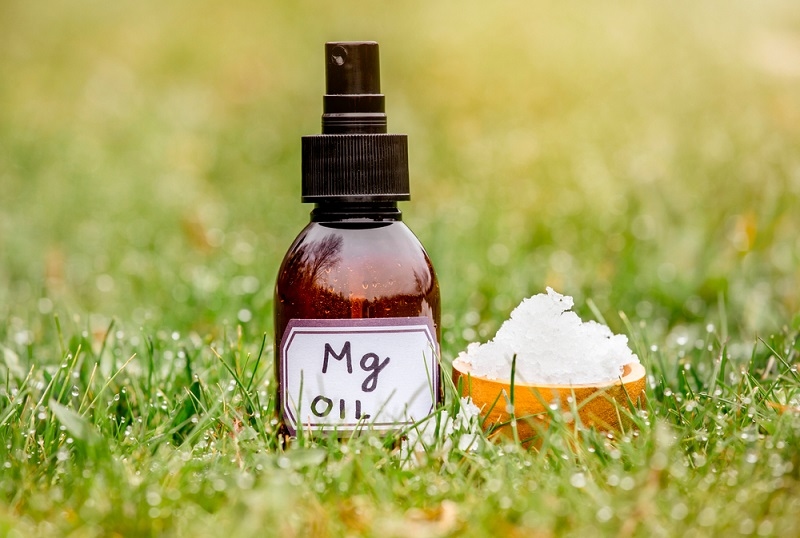
Magnesium Oil: Uses, Benefits, and Daily Wellness Tips
Despite the name, magnesium oil isn't an actual oil. It's a simple mix of magnesium chloride flakes and water that feels slightly oily when sprayed on the skin. People use it to restore magnesium levels without swallowing pills or powders. Since magnesium plays a part in hundreds of bodily functions, it's no surprise that this topical method has become so popular.Magnesium helps regulate muscles, nerves, blood pressure, and even mood. When levels drop, fatigue, restlessness, or muscle cramps can start showing up. That's where magnesium oil spray helps, it's a quick, natural way to support what your body already needs.How Magnesium Oil Supports the BodyThe majority of people cannot get enough magnesium from their diet. The use of magnesium oil offers additional support to the body, especially during physically or mentally draining times. Even though the amount of magnesium absorbed through the skin is still a subject of discussion among scientists, numerous users feel the benefits after using it on a daily basis.Let's see how it goes:Muscle tension relief: Soreness and stiffness after long days or workouts are alleviated.Mind calming: Unwinding the body before sleep, thus enhancing sleep quality.Nerve health support: Shadowed muscle coordination and relaxation.Skincare enhancement: Ensures skin stays balanced and less reactive gradually.Whether it's the mineral itself or the act of massaging it in, magnesium oil spray often leaves you feeling lighter and more at ease.Related Reads: Understanding The Immune-Boosting Benefits Of Oregano OilBenefits and Uses of Magnesium OilHere are the top benefits and uses of magnesium oil that makes it a must use oil:1. Relieves Muscle Fatigue and StiffnessAnyone who trains, travels, or sits at a desk too long knows how tight muscles can get. Applying magnesium oil directly to sore spots helps them relax. It works best on the calves, shoulders, or lower back after physical activity.Magnesium supports muscle recovery and helps reduce post-workout soreness. Many athletes rely on it because it helps the body bounce back faster without relying on heavy creams or pain gels.2. Improves Sleep and Reduces StressMagnesium is an essential nutrient that promotes the body's relaxation process while regulating the nervous system. Applying magnesium oil on feet or shoulders before sleep informs the body to relax. Gradually, it can contribute to better sleep and less frequent awakenings at night.Moreover, it becomes a soothing ritual - the spray, the massage, and the silence that follows. Such little habit before sleep helps the brain to turn off and makes getting to sleep feel like a breeze.3. Calms Skin and Reduces InflammationSkin health is another underrated benefit of magnesium oil spray. Magnesium can help regulate overactive oil glands, soothe redness and improve skin texture. Long-time users frequently report that their skin is softer and less reactive.A few sprays after exfoliating or shaving can also be a great help to the skin. Just don't forget to do a patch test first since it might hurt a little on delicate areas.4. Promotes Healthy Nerves and Blood FlowMagnesium supports nerve communication and circulation. Regularly using magnesium oil spray may improve how your muscles and nerves work together. Some people say it helps reduce that heavy, achy feeling in their legs after standing or walking for hours.The gentle tingling that comes after spraying isn't harmful - it's simply the skin reacting to the mineral. That mild sensation usually fades with regular use.5. Quick, Natural, and Easy to UseThe advantages of magnesium oil start with how convenient it is. You don't need to remember pills or worry about digestion. Just spray, massage, and leave it on. The body absorbs what it needs, and the rest is wiped off later.You can use it right after a shower, before bed, or even post-workout. It fits easily into your day and doesn't require any prep. Once you start using it regularly, it becomes as natural as applying lotion.Must Read: Exploring the Benefits of Golden Milk: The Health WondersMagnesium Oil on Feet: A Simple Night RoutineUsing magnesium oil on feet before bed is one of the easiest ways to build consistency. The soles of the feet have large pores, which may help with better absorption. Plus, massaging your feet naturally relaxes the body.Spray five to ten times per foot, rub it in gently, and let it sit for 20 minutes or overnight. You'll wake up feeling lighter and more rested. Doing this every night can subtly improve sleep and mood over time.Real Advantages of Magnesium OilThe advantages of magnesium oil go beyond just muscle relief. Here's why daily use is a great idea:No swallowing or stomach upset: Digestion is totally avoided, which is a plus if oral magnesium does not agree with you.Localized results: Apply it where your body needs attention - no guesswork.Fast-acting: It works in minutes after applying..Natural calm: It supports your body in relieving stress without heavy supplementation.Versatile: It can be integrated into any wellness program, whether it is for fitness recovery or skincare.It won't completely compensate for dietary magnesium, but it's a simple and effective addition that can really change the way your body feels.How to Apply Magnesium Oil the Right WayAlways patch test: Apply it to a small area first to ensure that your skin tolerates it well.Use post shower: Apply the product to your skin when it is open, clean and dry.Gently massage: By rubbing it in, the body takes in the substance more easily.Keep it on for 15-20 minutes: Then rinse or wipe off if it feels sticky.Start with a small amount: First spray a few times and then gradually increase as your body gets used to it.At first, a light tingling sensation is normal, especially if your magnesium levels are low. However, this will go away with regular use as your body gets used to it.More to discover: Wonders of Lavender Oil: Benefits, Uses, and Side EffectsConclusionMagnesium oil is one of those small daily habits that silently support overall health. It helps the body to relax, recover and reset. You may use magnesium oil spray after workouts or prefer magnesium oil on feet before bed, but it adds a layer of natural care that feels effortless.The benefits of magnesium oil are straightforward-relaxation of muscles, better sleep, and improved skin. It is not a miracle cure but a gentle and effective step towards the realization of better health from the inside out.If you're looking for one easy addition to your wellness routine, start here. A few sprays a day can make more difference than you'd expect.
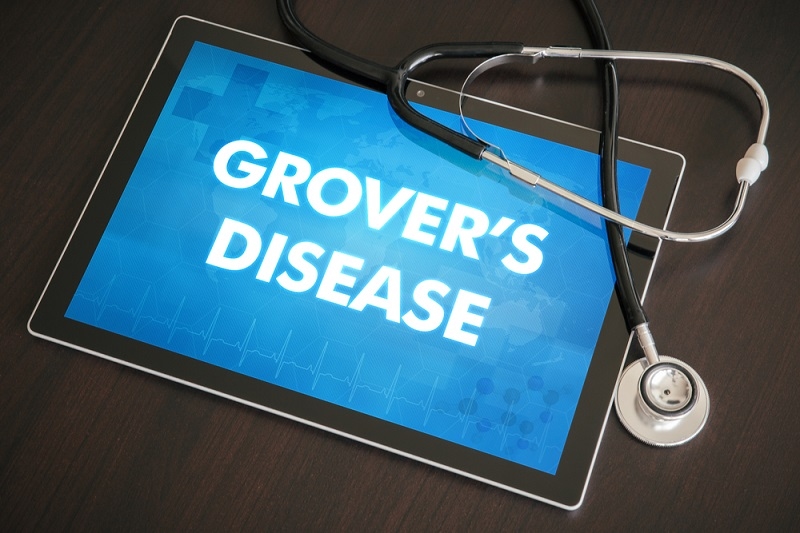
What is Grover's Disease, Its Causes & Common Symptoms?
You will notice that sometimes the skin reacts in ways that people don't expect, and out of nowhere, small red bumps show up that do not stop itching.This allergyis known as Grover's disease. It is not a very common skin allergy, but when it appears, it can be both irritating and confusing.This guide will help you learn through what is Grover's disease, its causes, and how you can deal with it.What is Grover's Disease?Grover's disease is a short-term skin condition that mainly affects adults, especially men over 40. Doctors sometimes call it transient acantholytic dermatosis. The word "transient" means it usually doesn't last forever. It comes and goes, often disappearing after a few weeks or months.The allergy usually causes rashes around your chest or back area. You will see that the rashes are small and the red bumps may even feel rough when you touch them. Lastly, the itching can differ from person to person because some people experience mild itching, whereas some suffer a lot.Always remember that Grover's allergy is not a dangerous disease, but can be extremely disturbing for your day to day life.Must Read: What Is Pustular Psoriasis? The Condition and Its ManagementUnderstanding What Causes Grover's DiseaseThe exact cause of Grover's disease is still to be discovered, but there are some factors that doctors have noticed can cause this allergy. You can find them in the following list:Heat and SweatMany cases begin after someone has been sweating a lot. Heat and trapped sweat under the skin can irritate the area and trigger a rash. People who spend time in hot environments or have been bedridden for long periods are more likely to get it.Dry Skin and AgingAs people age, skin becomes thinner and loses moisture. This makes it easier for irritation to develop. Grover's disease is more common in older adults because their skin barrier isn't as strong as it once was.Sun DamageYears of exposure to the sun can also make the skin weaker and more sensitive. Damaged skin may react more easily, and this can sometimes lead to conditions like Grover's disease.Other Skin StressesThings like long, hot showers, tight clothing, or certain soaps can irritate the skin and make symptoms worse. Sometimes, even a small irritation can start the cycle.List of Common Symptoms of Grover's DiseaseThe symptoms of Grover's disease are not always the same for all. Therefore, the following points include the different signs of this allergy:Red Bumps or Spots: The red bumps can be flat or raised and can also potentially form small blisters. These rashes can appear suddenly and quickly spread across your chest, back, and shoulder area.Itching: This is one of the most common signs of the Grover's allergy. It is also important for you to know that the itching can increase significantly if your skin gets hot or sweaty.Burning or Irritation: In many cases, people have described that they experience a mild burning feeling because of the rashes. Therefore, you should consider not rubbing or pressing those rashes because it can trigger such scenarios.The rash usually lasts a few weeks, though for some people it can stay longer. It may fade and then return later. While it can look worrying, it's usually harmless and does not spread from person to person.Learn How to Treat Grover's DiseaseTreatment for Grover's disease focuses on easing discomfort and helping the rash heal faster. Since it often goes away on its own, care usually involves reducing irritation and keeping the skin calm.Cool CompressesYou should apply a cool or damp cloth to the rash because it will provide you relieve from itching and reduce the redness. It also calms the burning sensation that can come with the rash.Topical CreamsDoctors may suggest creams that reduce inflammation. These creams can help control itching and speed up healing.Avoid Heat and SweatStaying in cool places and wearing loose cotton clothes helps keep the skin dry. Avoiding hot showers and saunas also prevents flare-ups.MoisturizersUsing gentle and fragrance-free moisturizers that can help repair the dry skin and protect it from irritation. Always remember that moist skin heals fasters and better.AntihistaminesThese are sometimes used to reduce itching. They help calm allergic reactions and make it easier to sleep if the itch is keeping someone awake.Most people recover within a few weeks with basic care. However, for those with severe or long-lasting symptoms, a doctor might prescribe stronger treatments.Top Pick: Effective Management: Side Effects of Psoriasis TreatmentsHelpful Tips for Managing Grover's DiseaseYou can check the following list to find some helpful tips for managing Grover's disease.1. Stay Cool and DryOne of the best ways to manage Grover's disease is to keep the body cool. Heat tends to make the rash worse. Airy clothes and light fabrics can make a big difference. Staying in air-conditioned rooms during hot days helps too.2. Keep the Skin Clean and MoisturizedGentle cleansing is important. Avoid harsh soaps or scrubs that remove natural oils from the skin. After a bath, a soft towel pat and a mild moisturizer can help lock in moisture.3. Avoid Scratching the RashScratching may bring short relief but can make things worse later. It can break the skin and lead to infections. If the itching becomes hard to handle, a cool compress or prescribed cream can be a safer way to ease it.These small steps, when followed regularly, can help the skin recover faster and prevent future flare-ups.How to Live a Happy Life With Grover's DiseaseLiving with Grover's allergy can be highly frustrating because it can happen without any kind of warning. However, if you show proper care and patience, recovering from this disease is completely possible.All you need to do is just follow some simple habits daily, like keeping your skin cool, staying hydrated, and using gentle moisturizers.It's also helpful to avoid long exposure to the sun or heat and wear breathable clothes that don't rub against the skin. Once the rash heals, taking care of the skin helps reduce the chance of it returning.ConclusionGrover's disease may seem like a mystery at first, but it's a temporary and treatable skin condition. With the right care, the rash fades, and the itching stops. Staying cool, gentle, and patient with the skin is usually enough. Most people go back to normal skin health without much trouble, even if it takes a little time.

Add Your Comment Here